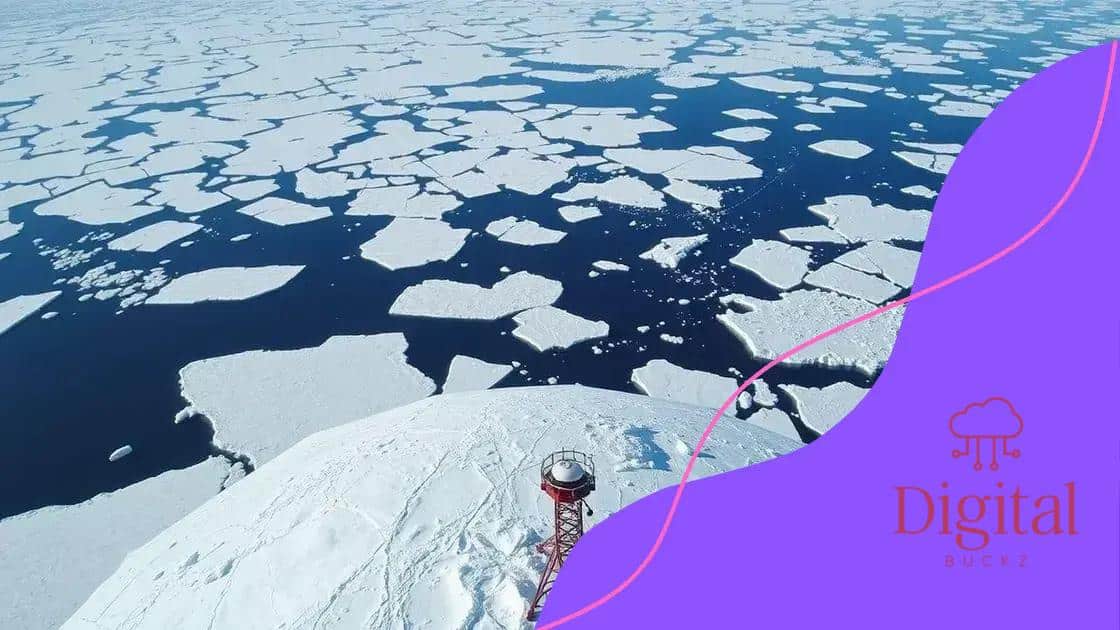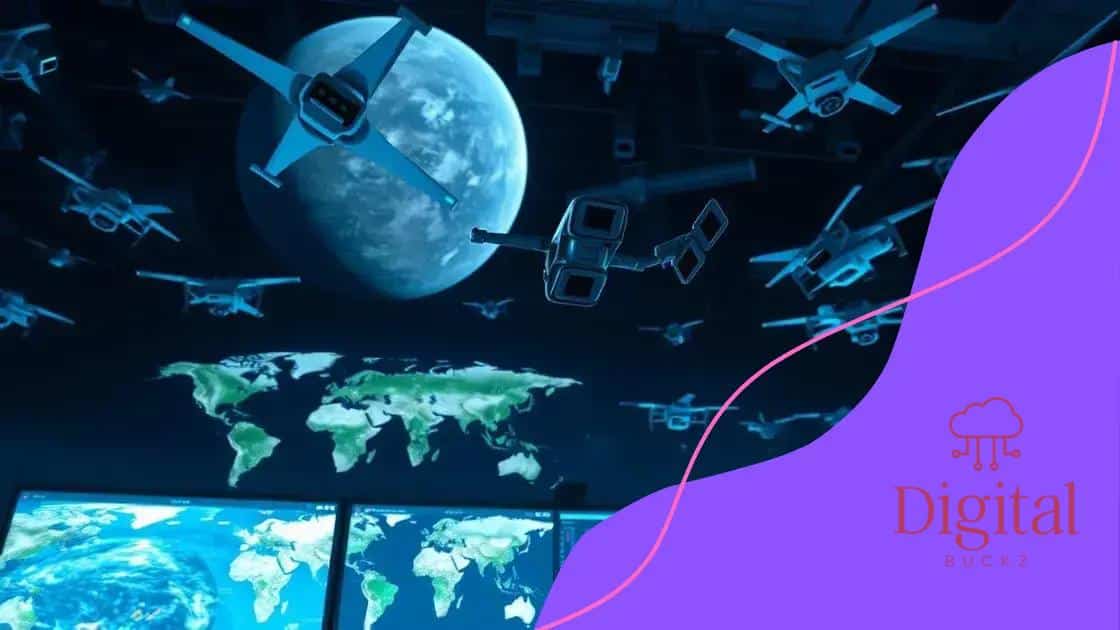US spy agencies Greenland surveillance: what you need to know

US spy agencies conduct surveillance operations that raise significant privacy concerns while playing a crucial role in national security, highlighting the ongoing tension between individual rights and governmental safety measures.
US spy agencies Greenland surveillance has become a hot topic, stirring curiosity and concern. What exactly is happening in this remote area? Let’s dive in and explore the details.
Overview of US spy agencies
The US spy agencies play a crucial role in national security. They work under the umbrella of federal organizations, gathering intelligence and monitoring potential threats both domestically and abroad. Understanding how these agencies operate provides insight into their impact on our safety.
There are several major agencies to be aware of, including:
CIA (Central Intelligence Agency)
The CIA is known for its role in gathering international intelligence. It focuses on foreign threats and has a reputation for covert operations.
NSA (National Security Agency)
The NSA specializes in data collection. Its primary focus is on intercepting communications and gathering intelligence to protect against cyber threats.
FBI (Federal Bureau of Investigation)
While the FBI is well-known for law enforcement, it also handles domestic intelligence. The agency works on counterterrorism efforts as well.
- Each agency has distinct goals and methods.
- Cooperation between agencies enhances overall effectiveness.
- Public perception of these agencies can vary widely.
Overall, the interconnectivity of these agencies shapes the landscape of national security. Their collaboration is essential in tracking potential threats and ensuring safety. While some may view their activities as intrusive, the primary aim of US spy agencies is to protect citizens and maintain stability.
Historical context of surveillance in Greenland
The historical context of surveillance in Greenland has deep roots that reflect both geopolitical interests and the unique challenges posed by this remote region. For decades, nations have viewed Greenland as a pivotal location for monitoring activity in the Arctic and beyond.
During the Cold War, Greenland became particularly important due to its proximity to the Soviet Union. The establishment of military bases, such as Thule Air Base, signified a shift in how surveillance was conducted. These bases served as key strategic locations for monitoring missile launches and gathering intelligence.
Modern Surveillance Techniques
Today, the methodologies utilized for surveillance in Greenland have evolved significantly. New technologies now play a crucial role:
- Satellite imagery has advanced, providing real-time data.
- Drone surveillance allows for meticulous monitoring without physical presence.
- Collaboration with other nations enhances intelligence-gathering efforts.
Furthermore, the Arctic climate and geography present unique challenges for surveillance operations. The harsh environment often limits access, demanding innovative solutions.
As global interest in the Arctic rises, understanding the historical context of surveillance in Greenland sheds light on current strategies and tactics. The combination of historical significance and modern technologies continues to shape how nations approach intelligence in this important area.
Technologies used for surveillance

The technologies used for surveillance have progressed rapidly, especially in recent years. Innovations have transformed how intelligence is gathered and analyzed. To understand this better, let’s explore some key technologies.
Satellite Technology
Satellites play an essential role in modern surveillance. They provide continuous monitoring of vast areas, capturing high-resolution images and data. This technology is crucial for tracking changes on the ground, making it invaluable for military and environmental purposes.
Drones and UAVs
Unmanned Aerial Vehicles (UAVs), commonly known as drones, offer a flexible approach to surveillance. They can be deployed quickly and to hard-to-reach areas. Drones equipped with cameras and sensors are used for:
- Real-time video monitoring
- Mapping terrain
- Gathering intelligence on specific targets
This technology allows agencies to observe situations without risking personnel.
Cyber Surveillance Tools
In the digital age, cyber surveillance tools have become increasingly important. These tools allow agencies to monitor online communications and activity. They help identify potential threats and gather valuable intelligence from social media and other digital platforms.
Technologies used for surveillance are continually evolving, as the demands for security and intelligence grow. The integration of artificial intelligence and machine learning is also changing how data is processed and analyzed. As these technologies develop, the ability to detect and respond to threats increases significantly.
Implications for privacy and security
The implications for privacy and security in relation to surveillance are significant and complex. As surveillance technologies continue to evolve, they raise critical questions about how personal information is collected, stored, and used.
One major concern is the potential for abuse of power. With advanced surveillance tools, governments can monitor individuals without their consent. This can lead to violations of civil liberties and erosion of trust between citizens and the state.
Privacy Concerns
Privacy is a fundamental human right, and surveillance threatens this right in various ways:
- Unwarranted collection of personal data can infringe on individual privacy.
- Constant monitoring can create a chilling effect, discouraging free speech and expression.
- Data breaches can expose sensitive information, leading to identity theft.
Understanding these risks is vital for safeguarding personal freedoms. As surveillance becomes more pervasive, the need for robust privacy protections grows.
Security Considerations
On the other hand, surveillance plays a crucial role in national security. The gathering of intelligence helps prevent terrorist attacks and other threats. However, balancing security needs with privacy rights is challenging. Effective policies must ensure that security measures do not compromise individual freedoms.
The debate surrounding these implications for privacy and security continues to evolve. Ongoing discussions among policymakers, tech companies, and civil rights advocates are essential to find a suitable middle ground. Awareness of these issues can lead to more informed opinions and actions regarding surveillance practices.
Public response to the operations
The public response to the operations of US spy agencies has been varied and dynamic. Many people express concern about privacy rights, while others emphasize the importance of national security. This tension reflects a complex relationship between citizens and government oversight.
Some citizens feel uneasy about the level of surveillance in their daily lives. They argue that such operations invade their privacy and can lead to misuse of information. There are valid fears that personal data could be collected without consent, and this raises important ethical questions.
Awareness and Activism
In recent years, awareness surrounding these issues has increased:
- Grassroots movements have emerged, advocating for stronger privacy protections.
- Public protests have highlighted demands for transparency in government operations.
- Organizations work to inform citizens about their rights and the implications of surveillance.
Activism has taken many forms, from petitions to social media campaigns. These efforts aim to bring greater accountability to spy agencies.
Government and Agency Responses
In response to public pressure, some government officials and agencies have attempted to be more transparent about their operations. They engage with community leaders and hold public forums to address concerns. While these steps are positive, many argue they are not enough.
Additionally, agencies may enhance their public relations efforts to improve their image. This includes communicating the importance of their work in protecting national interests.
The ongoing debate regarding the public response to the operations of US spy agencies highlights the need for balance between security and individual freedoms. As citizens become more informed, they continue to seek assurances that their rights are protected.
FAQ – Questions About US Spy Agencies and Surveillance
What is the primary role of US spy agencies?
The primary role of US spy agencies is to gather intelligence to protect national security and prevent threats.
How does surveillance technology impact privacy?
Surveillance technology poses challenges to privacy by collecting personal data without consent, raising concerns about civil liberties.
What are some common public reactions to surveillance operations?
Public reactions range from concern over privacy invasion to support for national security measures, reflecting a complex debate.
Why is public awareness important regarding surveillance?
Public awareness fosters advocacy for transparency and accountability in government operations, ensuring that citizens’ rights are protected.






